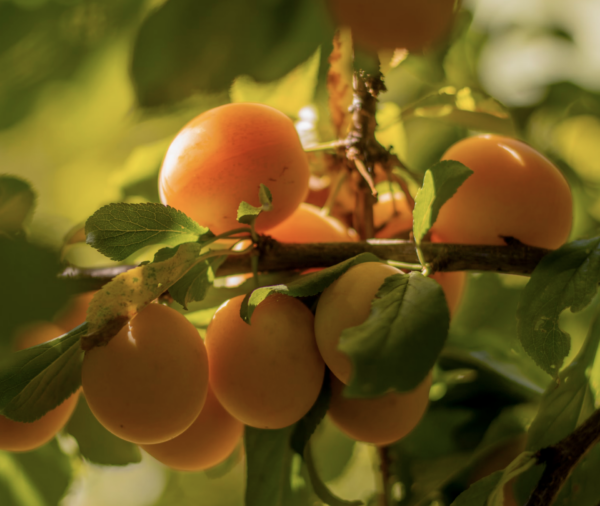Apricot trees produce beautiful, fragrant blooms in early spring. One of the earliest stone fruits to bloom, they can suffer frost damage causing crop loss during some seasons. Their fruit is so delicious that it’s worth the investment! For best fruit production plant trees in locations with a minimum of eight hours of sunlight. Our varieties are self-pollinating, but planting both can produce a greater harvest.
‘Chinese Mormon’ is a mid to late season producer with small, orange fruit with a red blush. Smooth, sweet and juicy, this variety does particularly well in areas that receive late frosts. Trees produce at an early age. Zones 4-7
‘Wenatchee’ has a mind season harvest time bearing large, oval, flattened fruits of orange and yellow. Great flavor. This variety grows well in the northeast where winter weather can linger. Zones 5-9.
CLICK HERE to check current availability and preorder fruit trees on our webstore.
Semi-dwarf trees grow 15’ high and wide.
PLANTING: Amend soil by mixing up to 50% compost with existing soil.. Plant tree so soil level in container is level or slightly higher than surrounding soil. Water in to remove air pockets around roots and mulch with wood chips. The first season, water regularly to establish tree.
FERTILIZING: Adequate nutrition is essential for quality fruit production. The best thing you can do is top-dress with compost every year. A general rule of thumb for adding additional fertilizer is to apply a combined 2/3 pound of bone meal and 1/3 Texas greensand to each tree the first year, double that the second year, and triple the third and subsequent years. Fertilizer should be broadcast on the soil surface around the drip line of the tree. The “drip line” is the circular line at the outer ends of the branches.
SCAFFOLD TRAINING: Improperly trained fruit trees have very upright branch angles which can result in excessive vigor and serious limb breakage under a heavy fruit load. Larger branches can be spread out using short wooden boards with a notch cut in each end to catch the branch. Hanging weights on branches or tying it down with string wrapped loosely around the limb are other useful methods for spreading branches. All upright growth from scaffold branches should be pulled down to a horizontal position or removed.
OPEN SCAFFOLD TRAINING: The open center system is good for peach and nectarine trees for maximum sunlight exposure, maximum yield, and best quality. Top the central leader and allow well-spaced side shoots to develop. Each year, remove diseased, broken, and low-hanging limbs and vigorous upright shoots that may have developed on the inside of the main scaffolds.
PRUNING: Pruning fruit trees during winter dormancy will invigorate the tree and cause it to grow and branch more the following season. Do dormant pruning in late winter or early spring after risk of severe freeze is over. Remove dead or diseased wood also. After tree resumes growth in the spring, continue to train the scaffold branches of the tree as you did the previous growing season. Prop lateral branches out to a 50 to 60 degree angle. Summer pruning will devigorate the tree and cause it to grow less in that growing season.
POLLINATION: Self-pollinating, but production will increase when two or more varieties are planted together.
